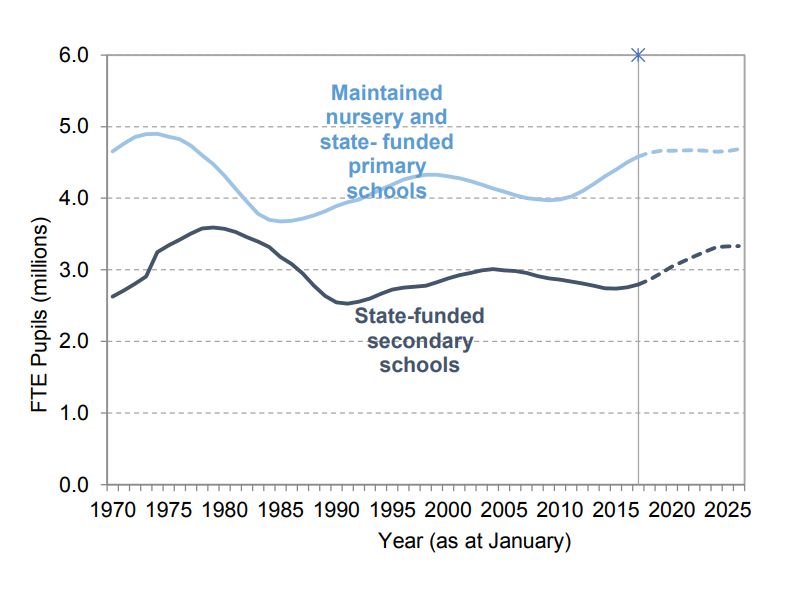A population bulge is expected to send pupil numbers in secondary schools soaring by 19 per cent over the next eight years, government projections show.
The Department for Education says pupil numbers in secondaries will rise by 530,000, from 2.8 million this year to 3.33 million in 2025, when the numbers will finally stabilise.
This is because additional pupils resulting from an increased birth rate in the early 2000s are now entering the secondary phase.
The bulge has already had a huge impact on pupil numbers at nursery and primary schools, which have been rising since 2009 and reached 4.58 million in 2017.
The rate of increase at primary is now slowing, and is expected to stabilise in 2019 and 4.66 million.
The report states that direct immigration of pupils born outside the UK has a “very small effect” on the school-age population.
Primary and nursery
The government has reported a 1.8 per cent increase in the population of state-funded nursery and primary schools between 2016 and 2017, which is slightly lower than forecast previously.
The overall population in primary schools was 4,558,000 in 2017 and is projected to be 100,000 higher in 2026 at 4,658,000, representing a 2.2 per cent increase.
Secondary
The number of pupils in English secondary schools has increased for the second year in a row, reaching 2,797,000 this year.
This is primarily because increased births from 2002 onwards means there are now larger numbers entering secondary schools at age 11 than are leaving them at age 16, the government says.
The rate of increase is projected to increase in 2018 to 2.4 per cent and to “remain high until towards the end of the projection period”.
The impact of pupil number rises at secondary is already being reflected in statistics on school places allocations.
Schools Week reported last month that pupils are now less likely to get their first choice of secondary school place as a result of the bulge.
Early years
The overall population of under five-year-olds in state-funded schools is projected to decrease slightly over the next two years, from a full-time equivalent of 865,000 in 2017 to 824,000 in 2019.
Officials say the drop is primarily due to the number of births in 2013 and 2014 feeding into this age group.
There will then be a slight rise, to 859,000 by 2026.








Time for schools to commission strategic property development plans, area analysis, schedule of accommodation and Building Bulletin 103 guidance to better prepare for ensuring their classrooms etc are fit for purpose.